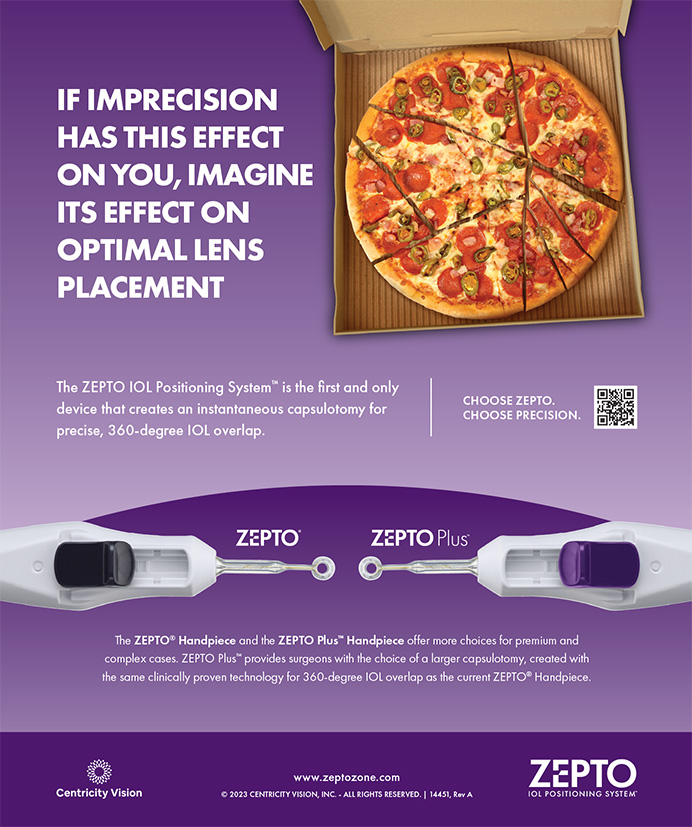

Marketing communications is the broad, superstructure term under which tactics or actions such as networking fall. Marketing, simply defined, is nothing more than establishing and then maintaining exchanged relationships with a customer base. For example, a cataract surgeon who wishes to develop a referral relationship with a community optometrist needs not only to establish that relationship but also to maintain it.
AT A GLANCE
- Marketing communications is the broad, superstructure term under which tactics or actions such as networking fall.
- Networking is an effective and efficient way to develop more business for one’s practice.
- Be sure not to focus solely on networking as your tactic of outreach so that you forget about the other dimensions of marketing.
There are hundreds of marketing tactics, and these tactics should be deployed in proper balance based on one’s particular practice. Such tools and tactics can include direct-to-consumer advertising, a web presence, some kind of customer service or customer care enhancement, and so on.
Of all the potential marketing tools available to medical practices, networking is no doubt one of the most valuable.
WHY NETWORKING?
Networking is an effective and efficient way to develop more business for your practice. There are several reasons for this.
Reason No. 1: Immediate Feedback
Networking provides immediate feedback as to whether outreach and referral development is working. For other common marketing tools— for example, direct-to-consumer TV advertising—it might take years after launching a campaign to see whether or not it had an effect.
Reason No. 2: Relative Low Cost
Some practices may hire an outreach coordinator and put on continuing education programs that can involve high cost. At its basis, however, networking is really just running a political campaign: identifying the doctors in your area that you want to gain referrals from, and going from there.
Reason No. 3: Fast Startup, Easy Change
For old-style direct-to-consumer advertising, you’d have to sit down with an advertising agency to develop themes, pull together executions, and place the advertising. A networking program, on the other hand, can start in the hour after you finish reading this article.
And it’s easy to change over time. If you have targeted 10 doctors that you would like to develop a referral relationship with, and three of them are responding but seven are not, you can turn to a new group of potential leads and go from there.
Reason No. 4: Suitable for Practices of All Sizes
We work with $50 million eye clinics that use outreach and networking to build their practices, and we work with modest solo practices that use the same approach. Networking scales irrespective of practice size.
WHERE DO I START?
Once your practice has decided that networking, outreach, and referral development are areas that you want to start doing or start doing better, where do you start?
Determine Your Audience
Like any other marketing activity, everything flows from the audience. The audience for an optometric referral network development effort, somewhat obviously, is the optometrists in your vicinity. That’s certainly the most important audience for a LASIK surgeon. Depending on your practice and your mix of subspecialty interests, your own audience may be different.
Make an inventory of the optometrists (or of whatever the target audience is) in your area. If you have a rural practice, this might be pretty simple. If you practice in Chicago, you might have 200 or 300 optometrists in your immediate service area.
Determine the baseline of how many of the doctors in your target audience are already referring to you, and establish a reasonable goal for the next 12 months.
It’s then a matter of trying to divide that baseline of doctors in the community into rational groups. A standard approach is to say, “Well, these are the A doctors, either by location, size of practice, or potential to refer to us. These doctors are at the top of our list and the ones we want to put the most effort into, including those who are referring to us now.” Then a list of B doctors would include those who are not going to be helping you much because they’re mostly referring to other doctors. Lastly, C doctors might include those that you wouldn’t bother to reach out to because you know they’re already tightly bound to other providers.
Outreach
Once you have your A list, you have to decide who’s going to do the outreach. There are no hard and fast rules, but it is a political process. If you are the kind of doctor who’s socially comfortable and has no problem meeting new people, knocking on doors, and waiting in waiting rooms, you might be the best person to do this. If you’re in a new startup practice, and if you don’t have a lot of funds available, you may be the only person.
In some practices, the administrator does this kind of outreach. Administrators can make natural alignments with their counterparts in the target practice. Some administrators are quite good at this and enjoy it as a dimension of their professional activity. In other practices, another staff member—perhaps a head technician or someone who shines at sales—can perform this function.
The more serious you get with outreach and referral development, especially in the optometric sphere, the more you may need a dedicated outreach person. This can range from someone in the community from whom you’d buy a few hours of time, all the way up to a former pharmaceutical representative who already has relations in the community and might charge $100,000 or $200,000 per year for this service.
Wherever you are on that continuum, make sure that the resources that you bring to bear are in line with what you can afford and what your goals are. You wouldn’t hire a full-time outreach coordinator if you had only four or five doctors on your target list, and you wouldn’t put your technician in charge of outreach part time if there are 100 doctors on your list. This is an area of business management, like all others, in which the resources have to be matched to the goals.
Track Referrals
To run an outreach program effectively, make sure that you have some way of tracking referrals. This should be done on two platforms. One is your practice management system, so that the front desk can fill in the field for referral source whenever they register a new patient. The second is some form of customer relationship management (CRM) tool. There are hundreds of CRM programs available. Some are phone-based, some are web-based, some are software programs you can buy, some are free. There’s no single emerging ideal CRM platform at this time.
If the practice doesn’t have many targets to keep track of, it could be sufficient simply to have an Excel spreadsheet showing the name of the referring practice, your contact there, and what the referral support level is. Other fields might be, for example, the personal interests of the doctor. This kind of database is crucial so that you can monitor feedback and see how effective your outreach is.
DON’T NEGLECT OTHER MARKETING EFFORTS
Be sure not to focus solely on this one tactic of outreach to the point that you forget about other dimensions of marketing. Many practices run from one marketing tactic to the next, each time neglecting the last thing they tried. Instead of jumping around, build upon your marketing efforts.




